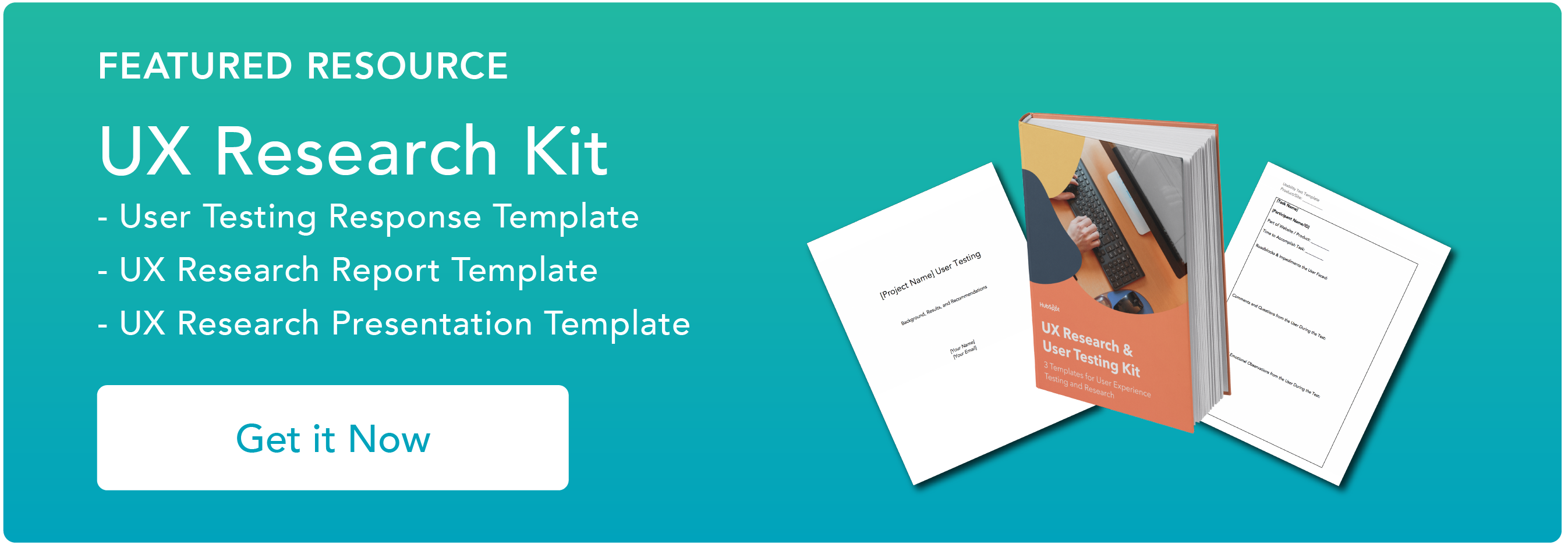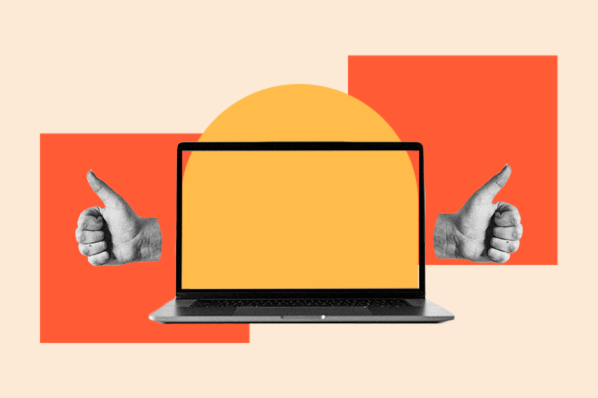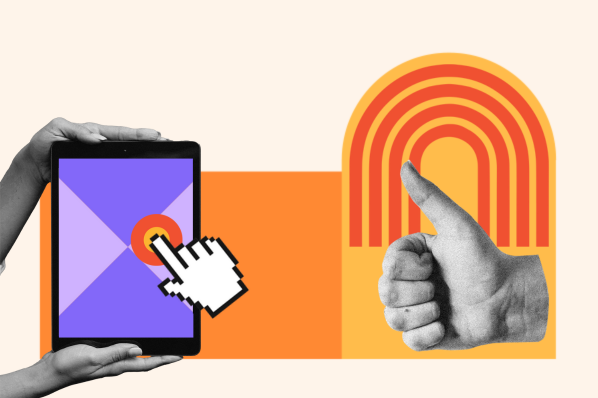I could quickly resolve issues I encountered when setting up my Workspace. Their system is straightforward to use, thanks to their simple hierarchy. As a newbie, I could quickly set up my podcast space, create lists to keep track of my episode ideas, schedule guests, and post content.
ClickUp has indeed allowed me to increase my productivity. When I first used the website, I was instantly impressed. If ClickUp had not grasped my attention initially, they probably would have lost a sale. So, it’s essential to design with first-time user experience in mind.
Table of Contents
- What is a first-time user experience?
- What impacts the first-time user experience?
- How to Craft the Perfect First-Time User Experience
- Expert Tips for Crafting First-Time User User Experiences
What is a first-time user experience?
Visiting a product, application, or service for the first time is considered the first-time user experience (FTUE). This first impression accounts for the user's interaction, how easy the sign-up process is, the simplicity of the user interface, and the overall rating the user assigns to the product.
Every UX designer strives to create a positive first-time user experience. At a minimum, this involves focusing on website flow and logic. You want your layout to be as intuitive as possible by making sure the user can easily navigate the product, empowering the user to feel confident in using the product. You can also ensure that features are beneficial for the users who want to keep using the product.
What impacts the first-time user experience?
Let's look at some valuable concepts to which you should pay close attention as you design your applications.
Clear and Concise Design
In today's climate, most users are obsessed with speed. Not only do they want the application to load fast, but they want their goals met quickly as they interact with it.
According to Patrice Gardner, a freelance UX designer, “the simplicity of it all helps to avoid confusion and reduce frequent errors ... A user reaching their goal should feel like something other than work or an active player in a scavenger hunt. Like social media, only a few seconds are granted before a user becomes uninterested due to poor experience."
Simple Sign-up Process
Exhausting sign-up forms can run users away. You must simplify this process to increase the chances of the user completing the journey. Lengthy signup forms can leave a negative impression about your product or brand on users, resulting in a loss of interest.
Optimized performance and speed
According to Google, the probability of bounce increases by 32% as page load time goes from 1 second to 3 seconds. Applications that take too long to load for users will hurt the FTUE.
Features Tutorials, Help Center, and Tooltips
Not all users are created equal. We must provide support such as tutorials, self-help docs, or tooltips to empower them to use our application to their liking.
Adanma Ojukwu, a UX Designer, shares her experience in designing a job board functionality for an Air Force product and how tooltips were needed thanks to the plethora of military abbreviations.
Ojukwu shares, “One of the solutions used to alleviate first-time users' confusion was to use tooltips to give the full description of abbreviations. I also included logic for displaying success and error toast alerts when the user selects a job to apply for or reaches their selection limit.”
Collect Feedback
When I am using a product that I really like but I have feedback for improvement, I take pride in sharing it. I feel more compelled to continue using a product when I feel heard.
No one is perfect, but a product or a team committed to improving is always worth supporting. When companies make it easy and welcoming to share feedback, it shows that they are committed to keeping their customer happy as they improve.
Accessibility
Applications not designed with inclusivity can unintentionally block potential users.
Gardner agrees, "Accessibility is also a supporting factor, which should always be a standard in design. As designers, we must research and lead with empathy and curiosity to ensure we support people from diverse situations.”
This includes incorporating accessible features to be more understandable and operable for various people.
Language differences, disabilities, and impairments should all be considered. Font and color choice is critical for legibility and optimization between screen sizes. In short, designers must be adaptable so we can empower our users by removing or at least decreasing technological barriers.
How to Craft the Perfect First-Time User Experience
I created a mock SAAS application to demonstrate how to craft a first-time user experience. For context, the application is called Fit US. Its mission is to connect individuals looking for accountability partners to increase their chances of accomplishing their fitness goals.
In the following sections, I will demonstrate a few steps to create a first-time user experience using Fit US as an example.

Conduct research.
Conducting research is easy thanks to methods such as surveys, usability testing, interviews, and online polls. I created a Google form with questions that I want to use to help me gather information about potential users.
Identify your target audience.
Designing an application without understanding who it's for can lead to a lack of direction, wasted resources, and a negative user experience.
Fit US targets individuals who are having trouble accomplishing their fitness goals and believe they will be more successful if they have someone to help them stay on track virtually. These individuals are looking for a cheaper alternative to hiring a personal trainer.
I identified my target audience by looking at statistics from fitness studies. From here, I concluded a solution to a problem: more Americans need help getting fit.
Conduct research.
Conducting research is easy thanks to surveys, usability testing, interviews, and online polls. I created a Google form with questions I want to use to help me gather information about potential users.

Identify functionalities.
You must identify what functions are required for your application to work. In other words, what does your application do for the user? I determined the four main functionalities that Fit US will incorporate:
- Find a fitness accountability partner.
- Create a fitness contract that outlines the user's goals that they want to achieve.
- Allows users to send awards and recognitions when their partner reaches a milestone.
- Enter metrics such as meals, completed workouts, and other fitness details they want to track.
-1.webp?width=650&height=368&name=emailmarketing_4%20(1)-1.webp)
Build a simple onboarding process.
Remember you want the user to feel positive when interacting with your application for the first time. I want my user to be onboard in less than a minute.
I created a modal for the sign-up process to shorten the load process instead of redirecting users to another page. Users are not bombarded with unnecessary information requests. I only include four fields because this is all the information I need to onboard the user.

Expert Tips on Crafting First-Time User Experiences
Research, research, research.
Gardner emphasizes the importance of research.
She says, "Do not take the shortcut with UX research and learning more about your current and potential users. This is how you get insight into fixing and preventing problems/pain points.”
Remember, Gardner notes, that as the designer, you are the users’ voice. “You must be an advocate for the single parent, the busy professional, the older adult losing their eyesight, one with quadriplegic injuries, the college student, board leaders,” she explains.
According to Gardner, even with extensive research, you will most likely have future problems to solve and improvements to make. Be sure to stay on top of changes in technology that might impact your users.
“Always have an open mind and be ready to learn and adapt,” Gardner says.
Create a storyboard or journey map.
Creating a storyboard or journey map is a great way to capture user thoughts, emotions, and interactions with your product. This document lays out what you expect your users to do on your site. You can then see if your desired experience is intuitive.
Ojukwu suggests, “Creating a storyboard or journey map based on user scenarios of primary tasks helps visualize the ideal path and uncover possible frustrations or confusing steps and interactions that can be improved or explained.”
Journey maps allow designers to visualize their products from end to end.
Gardner agrees, “Lean on your journey mapping for guidance. This is your user's point of view of their experience and feelings, along with their motivations. As you analyze the map, you will be able to get a deeper understanding of user interaction and opportunities for improvement.”
Prioritize usability over creativity.
While cute and creative designs are visually appealing, functionality should always be a designer's priority. Ojukwu says, “Opt for making the UI and the flow of the app more usable instead of creative.” What good is your application design if it doesn‘t solve the user’s problem?
Don’t forget to test.
Testing allows designers to gain important user feedback to validate designs, identify pain points, and ensure a positive FTUE.
Gardner advises that teams be intentional with testing. She notes that teams should make sure their prototypes are tested with a diverse group of users. This involves knowing who your users are and their expectations.
“The feedback you receive is invaluable because you will receive thoughts, recommendations, a list of challenges, and, in some cases, witness first-hand initial reactions. These elements drive enhancement and improve the product for greater user satisfaction,” Gardner says.
Always Keep the First-time User Experience in Mind
Now that you‘ve grasped the concept of "first-time user experience," it’s time to start crafting your digital platforms with this in mind.
Whether it's a website, app, or any other digital service, considering first-time user experience principles can help ensure your users feel supported from the start. This approach prevents user frustration and fosters a positive environment that people are eager to revisit.
User Experience
.png?width=112&height=112&name=Image%20Hackathon%20%E2%80%93%20Square%20(10).png)
.png)


![How to become a UX designer, a step-by-step guide [expert tips]](https://53.fs1.hubspotusercontent-na1.net/hubfs/53/become-a-ux-designer-1-20240731-321437.webp)


![How to Add a Parallax Scrolling Effect to Your Website [Examples]](https://53.fs1.hubspotusercontent-na1.net/hubfs/53/scroll-Aug-11-2023-05-24-08-8793-PM.png)

![20 UX Design Examples Hand-Picked by Experts [With Analysis]](https://53.fs1.hubspotusercontent-na1.net/hubfs/53/ux-design-examples-1-20250404-8425368.webp)
